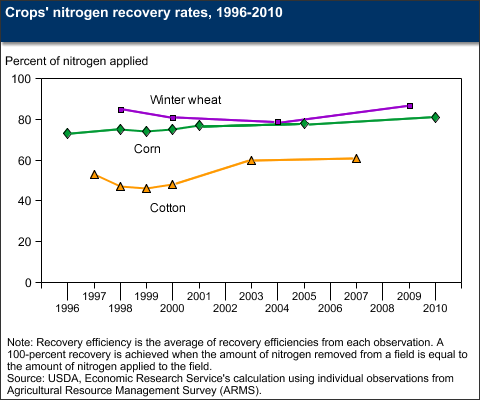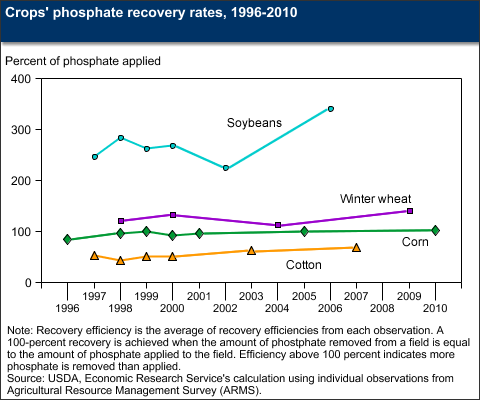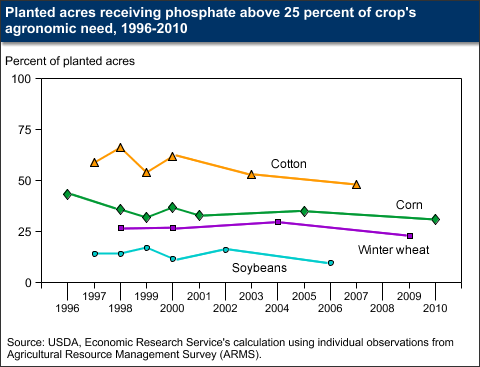Nitrogen, phosphate, and potash are essential plant nutrients for the production of crops used for food, feed, fiber, and fuel. If over applied, though, nitrogen and phosphate can harm the environment. While commercial fertilizers are the major source of applied nutrients, animal manure and other organic materials also contribute nutrients for crop use. Efficient use of nutrients can be achieved by the adoption of best nutrient management practices (BMPs). BMPs include selecting the right fertilizer product and applying the right amount at the right time and place to match plant needs and reduce nutrient losses. In addition, applying manure and adopting a crop production management system to improve soil organic material, reduce pests, control soil moisture, and reduce soil erosion can enhance plant's capability to uptake nutrients.
- ERS analyzes both the adoption of these practices and their effectiveness in reducing fertilizer costs, increasing farming profitability, minimizing nutrient losses to the environment, and conserving natural resources.
- ERS investigates trade-off between farm income and environmental protection in nutrient use, and evaluates policy instruments to provide technical assistance and financial incentives for farmers to adopt BMPs.
- Agricultural Resource Management Survey (ARMS) data provides insight on nutrient management practices, nutrient use efficiency, excess nutrient use, and mining soil nutrients for major crops.
Farmers Are Improving Nutrient Recovery Rates For Most Crops
The nutrient recovery rate is the ratio of the amount of nutrient in the harvested crop to the amount of nutrient applied. Partial recovery occurs when the amount applied exceeds the amount removed. For corn, nitrogen recovery efficiency increased from 73 percent in 1996 to 81 percent 2010, while phosphate recovery hovered near 100 percent. For soybeans, phosphate recovery is above 100 percent, suggesting that phosphates are actually mined from the soil. Continued plant mining of phosphate may reduce soil productivity in the long-run.
Yield increase is the major factor in improving nutrient use efficiency in corn because higher yield results in more nutrients removed from the soil and thus reduce nutrient losses. Yields (and efficiency) have benefited from increased crop rotation (corn planted after soybeans), soil testing for nitrogen, use of genetically engineered (GE) seeds to reduce pest damage, and adoption of precision technology (like yield monitors and soil mapping).


Farmers Are Reducing Planted Acres With Excess Nutrient Use For Most Crops
For corn, the share of planted acres with excess nitrogen applied (above 25 percent of the crop's needs) declined from 59 percent in 1996 to 47 percent in 2010, while the share of acres with excess phosphate declined from 43 percent in 1996 to 31 percent in 2010. Other crops also exhibit either declining or unchanged share of planted acres with excess use of nitrogen or phosphate.


